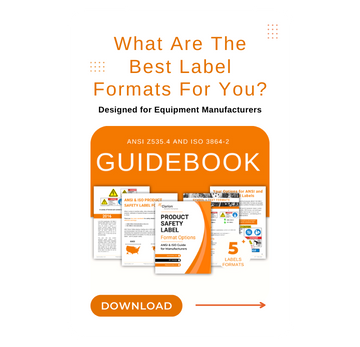

Why Pathway Markings Matter
One of the very first facility safety sign projects Clarion Safety worked on was for a company that had two deaths as the result of forklift accidents, just prior to our engagement. In one, the forklift backed over an employee who was wearing hearing protection (he either didn’t hear or heed the forklift’s audible backup alarm signal) – and he was not on a designated pedestrian path. The second death occurred when a forklift sped through a large doorway and struck a man who was walking on a pedestrian path and just happened to be on the other side of the door from the forklift when he walked into its path. Two deaths with less than 50 workers on site. Each of these fatalities were tragedies – as any company, regardless of size, understands. Yet this type of accident happens in workplaces all too often. The purpose of forklift rule signs and floor markings, as well as pedestrian pathway signs and markings, is to avoid this kind of tragic loss of life.
Reminding and Reinforcing Safety Rules
The problem at the facility noted above was not the lack of striped walkways, but rather a lack of training and visual reinforcement of both forklift and pedestrian safety rules. When we were hired to help develop a solution, it was determined that additional training, reinforced by signs, would remind both forklift drivers and pedestrians (workers and plant visitors) of the need to always be on the lookout for each other and to obey a set of simple rules defined for each intended viewer (drivers and pedestrians). We produced the traffic control signs, they were posted, and no forklift-related accidents have occurred since. Over the years, many of our customers have benefited from our forklift/pedestrian warnings and rule signs – making them a core component of Clarion Safety’s facility safety sign system.
Forklift accidents are responsible for around 7,100 injuries per year, with the main causes for injury being inadvertently driven off loading docks, falling between docks, striking workers, or workers falling from elevated pallets or forklift platforms. Injuries can vary between fractures, bruises, and sprains, to lacerations and amputations.
Forklift Safety and Pedestrian Pathmarking Signs
OSHA’s standards on forklift floor markings are detailed in 29 CFR 1910 (b)(2), and state that permanent aisles and passageways shall be appropriately marked. Clarion Safety’s forklift/pedestrian pathway marking system for industrial facilities consists of three important elements that serve to reinforce each other:
- Forklift driver rule signs in a large format that can easily be seen by forklift drivers on the move. These signs define your company’s forklift driver rules. Information conveyed on these customized signs include: honk horn when going through doorways, speed limits, wear safety belt and special precautions related to specific locations within your facility. Typically variations of these signs are posted on either side of doorways and in locations where forklift drivers begin or end their routes.
- Wall and gate mounted signs that warn pedestrians to stay on designated paths and to look out for forklift traffic.
- Floor-mounted pathway markings that pedestrians must walk on as they proceed along routes, repeatedly reminding them to stay clear of forklift traffic. Clarion Safety has a wide range of these floor markings, all designed with ANSI and/or ISO standards-based design elements. Clarion Safety's floor signs are produced on premium grade 3M adhesive-backed materials intended for both long-term adhesion and easy "no-mess" peel-up (which helps if the signs need to be replaced). A specially formulated slightly-textured 3M overlaminate is added to help with slip resistance and to protect the graphics from wear. (Note that all of our floor-mounted signs are round in shape so they’re less susceptible to edge peel-up. Signs with corners mounted on floors are prone to adhesion failure and peel-up, starting at the point of least resistance – the corners).
